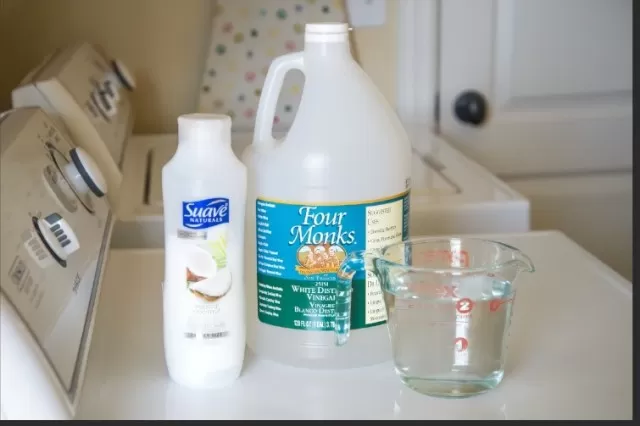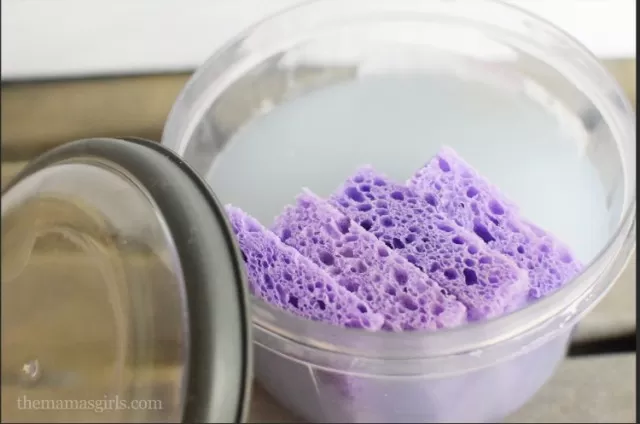4 Simple Methods to Create Fabric Softener at Home .Fabric Softener plays a pivotal role in most of our laundry routines, and its importance is undeniable. It effectively softens clothes and minimizes wrinkles, contributing to a fresh and comfortable wardrobe. While commercial fabric softeners abound, crafting homemade fabric softener provides a thrifty alternative that allows you to dictate the scents and ingredients that touch your garments. The best part? You can whip up your homemade fabric softener using readily available household ingredients.
There are several methods to concoct your own fabric softener, each offering ease of preparation and a sense of empowerment. These DIY solutions empower you to take control of your laundry experience, ensuring that Your Clothes not only feel luxuriously soft but also carry the fragrance of your choice. Get ready to revolutionize your laundry routine with homemade fabric softener, tailored to your preferences and wallet-friendly to boot.
Creating Homemade Fabric Softener with Vinegar: A Sustainable and Effective Solution

If you’re looking for an eco-friendly and efficient way to make your own fabric softener, vinegar stands out as a top choice.
Not only does it help soften your clothes and reduce bothersome static cling, but it also does so without leaving any potentially harmful residues. As Alicia Sokolowski, the president and co-CEO of Aspen Clean, explains, “Vinegar also helps remove soap residue and mineral deposits from fabrics,” making it a fantastic fabric softener option that can restore the softness and fluffiness of your beloved garments.
Despite vinegar’s strong scent, rest assured that it dissipates during the washing and drying process, leaving your laundry with a neutral or lightly scented result.
While vinegar is generally safe for most fabrics, it’s advisable to conduct a small patch test on a discreet area of your clothing before using it for an entire load. This precaution ensures that your homemade fabric softener with vinegar will be both effective and gentle on your precious garments, making it an excellent choice for sustainable laundry care.
Creating Fabric Softener with Hair Conditioner: A Convenient Option with Considerations
Crafting fabric softener using hair conditioner can be a convenient and effective approach to achieve soft and cozy laundry results.
However, it’s essential to be mindful that not all fabrics may be compatible with this method. Kathy Cohoon, the director of franchise operations at Two Maids, offers valuable insights, explaining, “Some fabrics, such as towels or athletic wear, may not benefit from the use of conditioner as it can reduce their absorbency or affect their performance. “.
Furthermore, it’s crucial to consider the potential fragrance aspect when using scented conditioners for fabric softening.
As Kathy Cohoon points out, scented conditioners may leave a fragrance on your clothes, which could be either desirable or undesirable depending on your personal preference.
In summary, while using hair conditioner as a fabric softener can be a convenient choice, it’s important to be selective about which fabrics you treat with it.
Be cautious when using it on fabrics like towels or athletic wear that rely on their absorbency or performance. Additionally, consider whether the fragrance left behind aligns with your personal preferences.
By doing so, you can make an informed decision on whether this method is suitable for your laundry needs.
Creating Wool Dryer Balls: A Natural and Eco-Friendly Fabric Softening Solution

Wool dryer balls are not only an excellent way to naturally soften your laundry but also a sustainable option that can save you time and energy.
Wool possesses unique properties that enable it to absorb moisture, reducing static cling and leaving your fabrics feeling soft and cozy. As Alicia Sokolowski points out, “Dryer balls help reduce drying time by increasing air circulation and separating clothes in the dryer, leading to energy savings and lower electricity bills.
“.
However, it’s essential to note that crafting wool dryer balls involves a process called felting, which can take some time and may require several wash and dry cycles to achieve the desired density and shape, as mentioned by Sokolowski.
While wool is generally considered hypoallergenic, some individuals may have sensitivities or allergies to it. Therefore, if someone in your household has a wool allergy, it’s advisable to explore alternative fabric softening methods.
In summary, making wool dryer balls is a natural and eco-friendly approach to soften your laundry while potentially saving on energy costs.
However, patience is key during the felting process, and it’s essential to be mindful of wool allergies if they exist in your household.
Creating Customizable and Eco-Friendly Dryer Sheets

If you’re looking for an eco-friendly and customizable fabric softening solution, consider making your own dryer sheets.
Homemade dryer sheets not only let you choose your preferred scent but also help reduce waste since they are reusable. Kathy Cohoon emphasizes, “It may require some experimentation to find the right combination that works best for your laundry.
“.
To craft your own dryer sheets, you can use various ingredients, including essential oils to add fragrance.
However, it’s crucial to be mindful of potential sensitivities or allergies, as Cohoon advises, particularly when using essential oils. Be sure to select ingredients that align with your household’s needs to avoid any adverse reactions.
In summary, making homemade dryer sheets is an eco-conscious and customizable approach to fabric softening.
By experimenting with different ingredients and scents, you can tailor your dryer sheets to your laundry preferences while minimizing waste. Just remember to consider any sensitivities or allergies within your household when choosing ingredients for your DIY dryer sheets.
*The information is for reference only.